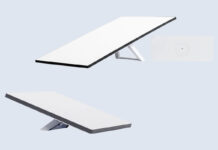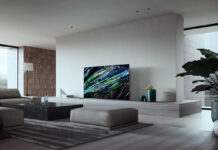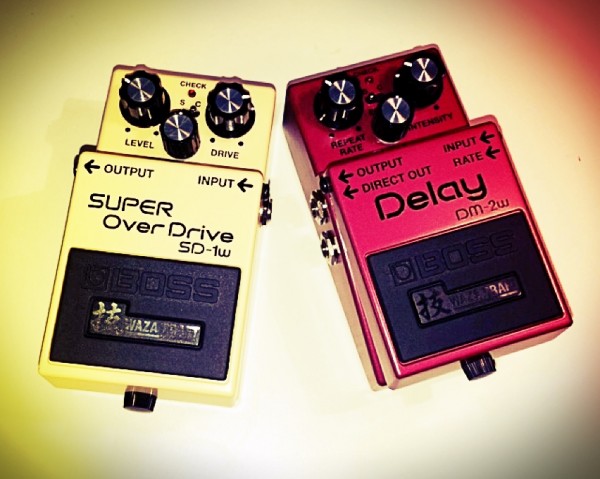 As I mentioned in my last blog entry, I love it when a new parcel shows up at my door with more gear to try out. As I tore into this package to see what goodies lay inside, I quickly saw that it was 3 new pedals from Boss. As I pulled them out one by one, I saw the new Super Overdrive, the new Delay, and the new Blues Driver. Well, two out of three ain’t bad. I had already reviewed the Waza Blues Driver a few months back so if you wanted to read that one, by all means follow this link. I was particularly excited to see the new DM-2W delay as it is based on the impossible to find unless you have won the lottery DM-2 which was much revered and is still highly coveted. As a fan of music on the heavier side of things, I believe you can never go wrong trying to make a nice warm distortion/overdrive and couldn’t wait to see what the SD-1W was bringing to the table.
As I mentioned in my last blog entry, I love it when a new parcel shows up at my door with more gear to try out. As I tore into this package to see what goodies lay inside, I quickly saw that it was 3 new pedals from Boss. As I pulled them out one by one, I saw the new Super Overdrive, the new Delay, and the new Blues Driver. Well, two out of three ain’t bad. I had already reviewed the Waza Blues Driver a few months back so if you wanted to read that one, by all means follow this link. I was particularly excited to see the new DM-2W delay as it is based on the impossible to find unless you have won the lottery DM-2 which was much revered and is still highly coveted. As a fan of music on the heavier side of things, I believe you can never go wrong trying to make a nice warm distortion/overdrive and couldn’t wait to see what the SD-1W was bringing to the table.
DM-2W Delay
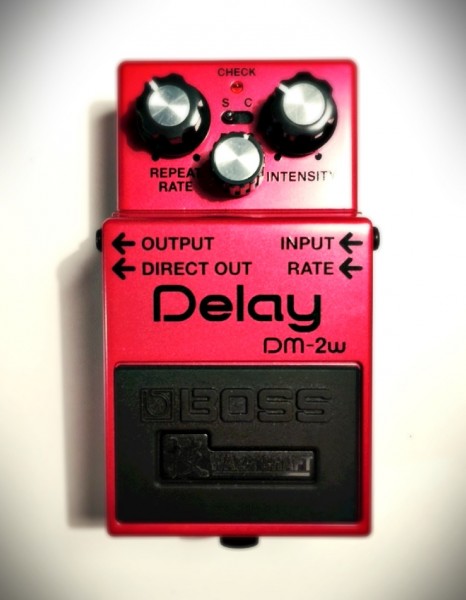
Boss’ WAZA Craft series of pedals (apparently WAZA means Art & Technique. Gotta love Google) is a direct response to some of the boutique pedal manufacturers releasing effects pedals today. It almost seems odd to talk about a Boss delay pedal and not say “digital delay” as that is what they are renowned for these days. For those from the old school, however, the DM-2W sees the clock turned back with the (re)arrival of an analog delay pedal. Based on the DM-2 delay that was manufactured for a brief time from 1981-1984, I can only say that at its core, simplicity reigns here.
As an owner of the Boss DD-7 Digital Delay (and a DD-3 before that) which is a stalwart on my pedal board, making changes to it often requires that I pull out the manual as I try to remember what each of the functions does as it is rare, for me at least, to just play with the dials and switches and easily find what I am looking for. I need to take a measured and educated approach so I don’t get lost in the matrix, so to speak. The upside to it’s digital technology is that I always know what I will get when I stomp on it and it is reliable and trustworthy when I do get the settings I want.
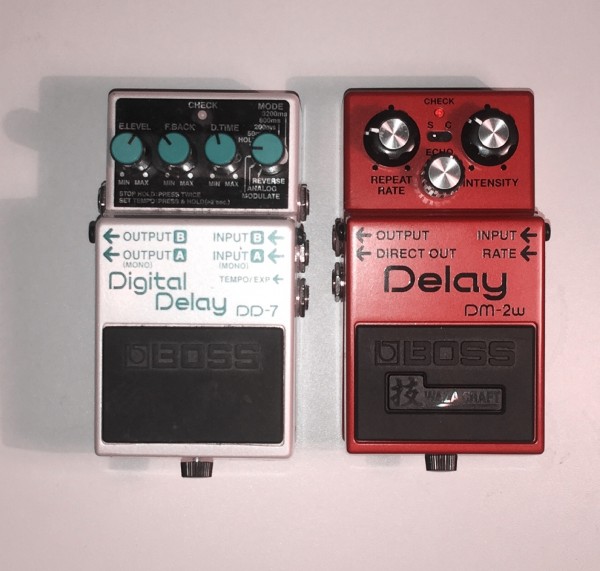 When I plugged the DM-2W in for the first time, I noticed the lack of dials, and writing, and settings. I did notice that it has 2 out which means you can output a dry and a wet signal or you can output to 2 different amps. You can also use an expression pedal with it so to say it is bare bones is not correct, but compared to other Boss delay pedals, it certainly is minimalist, and I assume that’s the point. Like the original DM-2, it repeats between 20ms and 300ms but in the new “custom” mode, it will repeat up to 600ms. I did notice in custom mode that if you aren’t carfeul when you switch from standard to custom, you can get some crazy analog feedback that is a mess. Always make sure you dial back the intensity before you make that switch. The delay itself was what I would describe as think and ambient and fairly simple to get the delay and tone that I wanted. For instance when our band plays Welcome to the Jungle, it took a long time to try and dial in that intro delay to where I wanted it but it literally took seconds to get a reasonable facsimile with the DM-2W. All in all I found it easy to use and it gave a solid delay/echo while still offering some flexibility in designing sounds. Make sure you check out my video to see and hear it for yourself.
When I plugged the DM-2W in for the first time, I noticed the lack of dials, and writing, and settings. I did notice that it has 2 out which means you can output a dry and a wet signal or you can output to 2 different amps. You can also use an expression pedal with it so to say it is bare bones is not correct, but compared to other Boss delay pedals, it certainly is minimalist, and I assume that’s the point. Like the original DM-2, it repeats between 20ms and 300ms but in the new “custom” mode, it will repeat up to 600ms. I did notice in custom mode that if you aren’t carfeul when you switch from standard to custom, you can get some crazy analog feedback that is a mess. Always make sure you dial back the intensity before you make that switch. The delay itself was what I would describe as think and ambient and fairly simple to get the delay and tone that I wanted. For instance when our band plays Welcome to the Jungle, it took a long time to try and dial in that intro delay to where I wanted it but it literally took seconds to get a reasonable facsimile with the DM-2W. All in all I found it easy to use and it gave a solid delay/echo while still offering some flexibility in designing sounds. Make sure you check out my video to see and hear it for yourself.
SD-1W Super Overdrive
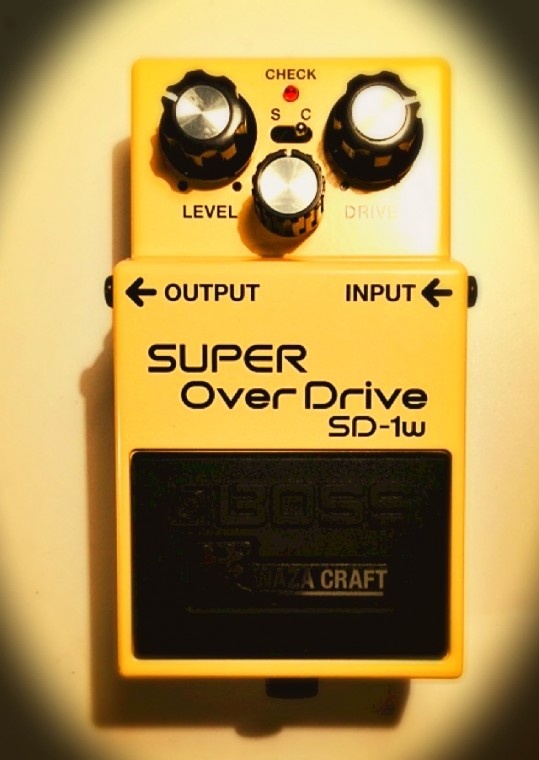 In the early 1980s, and since, the SD-1 Super Overdrive was one of the leading overdrive/distortion pedals for a lot of hard rock players. I remember hearing that Eddie Van Halen used one early in his career as well as other big names. While I have tried one, I have never owned one and in fact I sill have the Boss OS-2 Overdrive/Distortion on my pedal board. The first distortion pedal, actually the first pedal I ever got period was the BOSS Heavy Metal Pedal and it still lives on the pedal board too. These have also long been discontinued but can’t bear to let it go. The one thing that I do remember about the SD-1 were the harmonics. The distortion on the original unit was well suited to both natural harmonics as well as pinch harmonics and on the SD-1W I noticed the same thing.
In the early 1980s, and since, the SD-1 Super Overdrive was one of the leading overdrive/distortion pedals for a lot of hard rock players. I remember hearing that Eddie Van Halen used one early in his career as well as other big names. While I have tried one, I have never owned one and in fact I sill have the Boss OS-2 Overdrive/Distortion on my pedal board. The first distortion pedal, actually the first pedal I ever got period was the BOSS Heavy Metal Pedal and it still lives on the pedal board too. These have also long been discontinued but can’t bear to let it go. The one thing that I do remember about the SD-1 were the harmonics. The distortion on the original unit was well suited to both natural harmonics as well as pinch harmonics and on the SD-1W I noticed the same thing.
As a WAZA series pedal, the standard mode suits well to the original pedal and the custom switch amps it up even more. I did find though that while custom mode gave it more bite and sustain, it also made it brighter and lost a bit of that warmth from the standard setting. To borrow a bit from one of my guitar heroes, Mr Nigel Tufnel, the custom switch could provide that “extra push over the cliff” when you need it. Almost as if it went to 11. Essentially it simply provides you with more options for tones. Be careful not to give it too much as I found that in those situations, you start to lose the individual picking into that wall of overdrive, albeit warm tube sounding, and it is those articulations that are the SD-1W’s strengths. So while the standard mode is old school feeling the custom mode has a newer edge to it and sounds more current musically.
Bottom Line
Simplicity that combines the traditional with the new is how I would describe these 2 new entries from the Boss WAZA Craft series. The DM-2W takes that sought after classic analog delay from its namesake and serves it up for you but also adds some new terrain to explore and puts it all in the die hard stomp box that Boss is famous for. The SD-1W follows suit by providing the warmth and harmonic capacity of the original pedal and again adds a new dimension to bring it into the 21st century. As always I would definitely suggest that you head into your nearest Best Buy and give these, and all the other Boss pedals a go to see which is going to provide you with the tone that suits your needs because at the end of the day, it is your ear that knows what you want. Best part about it is that it is fun to play and tweak as you chase that elusive dragon of perfect tone. Have fun!

